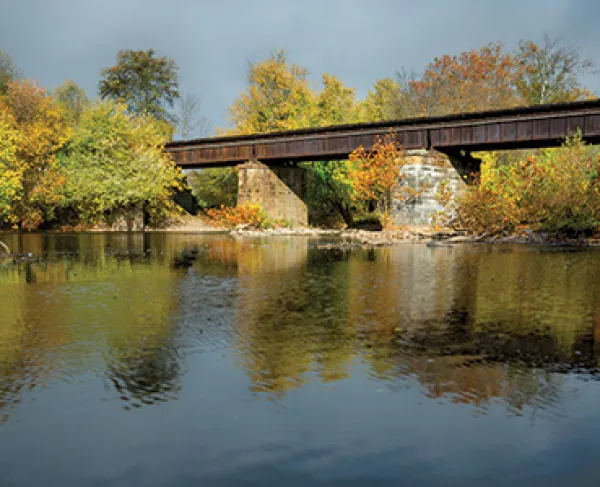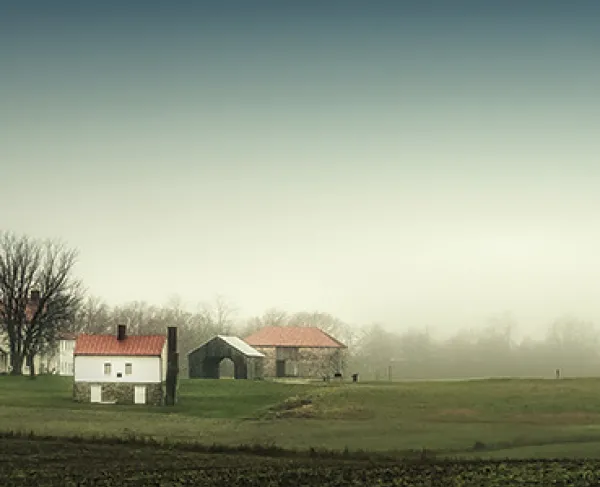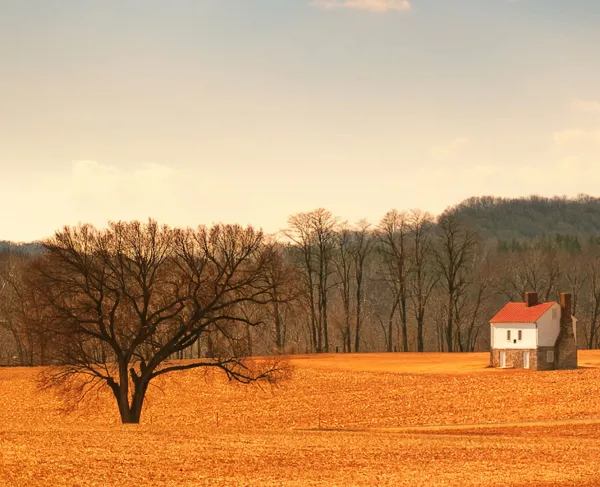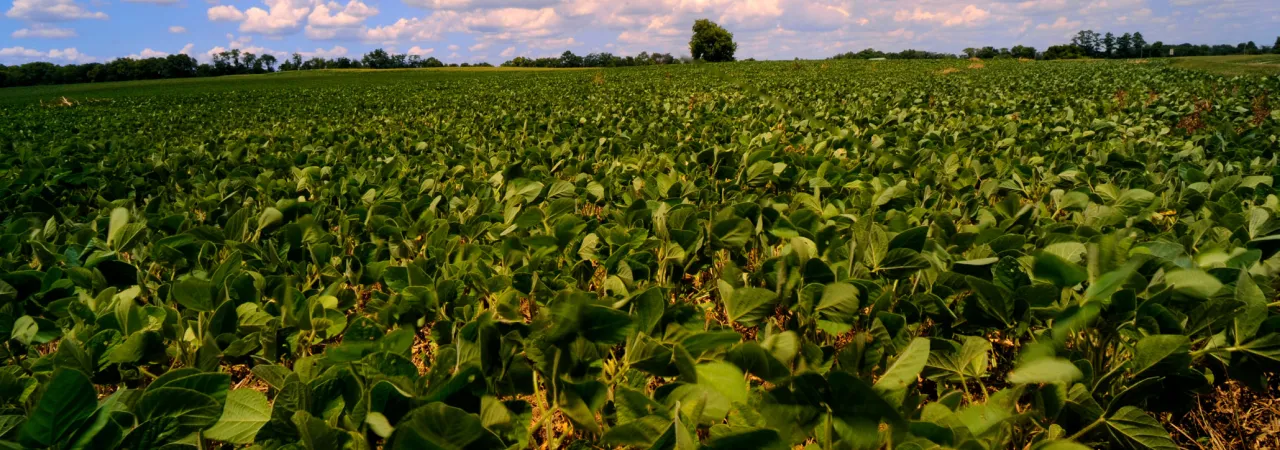
The Monocacy battlefield is home to four historic homes, each with a unique story to tell. Together, they tell the history of the causes, conduct, and outcome of the American Civil War. This history begins long before the events which consecrated them as hallowed ground in 1864.
The property today known as the Best Farm began its life in the 1790s as the property of the Vincendiere family. The Vincendieres were French exiles from the colony of Saint Domingue, modern-day Haiti. When the French Revolution began in 1789, the revolutionary government was unable to effectively govern its colonies and the slaves of Saint Domingue revolted to seek freedom. Reprisals against slave owners caused the island’s white population to flee, including the Vincendieres.
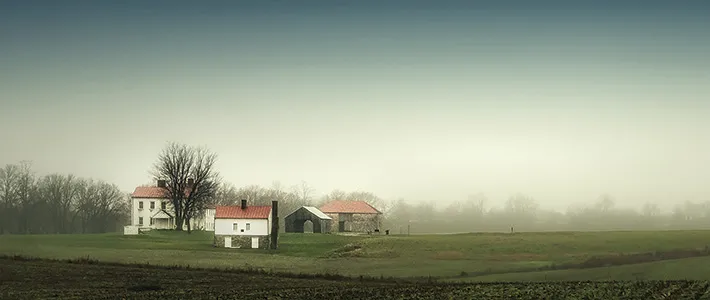
Settling down in rural Maryland, they purchased 748 acres of land southeast of Frederick along the banks of the Monocacy River. Near the southern end of their property, they built a white, two-story wooden home along with a stone barn and other outbuildings. They named the plantation “L'Hermitage” and purchased over ninety enslaved persons to manage the crops.
The David Best family began renting the property from a new owner in the 1850s. David oversaw the farm during the opening years of the Civil War, hosting both Confederate and Union troops during the 1862 Maryland Campaign. Gen. Robert E. Lee placed his headquarters on the property for three days, writing the “Lost Order” which was later found nearby on the northern edge of the farm.
David’s son, John, took over the farm in 1864 and was preparing for a fruitful harvest when Gen. Jubal Early’s army swept across the farm that July. During the Battle of Monocacy, the house and outbuildings were looted and damaged, the barn burned out, farm equipment destroyed, and the crops trampled. The Best family continued renting the farm until the 1920s, and the Wiles family continued living in the home until the National Park Service acquired the property in 1991.
Across the river from the Best Farm lies the Worthington Farm. The home, built in 1851 and originally named the “Clifton Farm”, was acquired by John T. Worthington in 1862. He came from a well-to-do family of Frederick County farmers and saw similar success on his own property. The Worthingtons and their seven slaves managed the farm, renamed the "Riverside Drive and Farm," throughout the war.
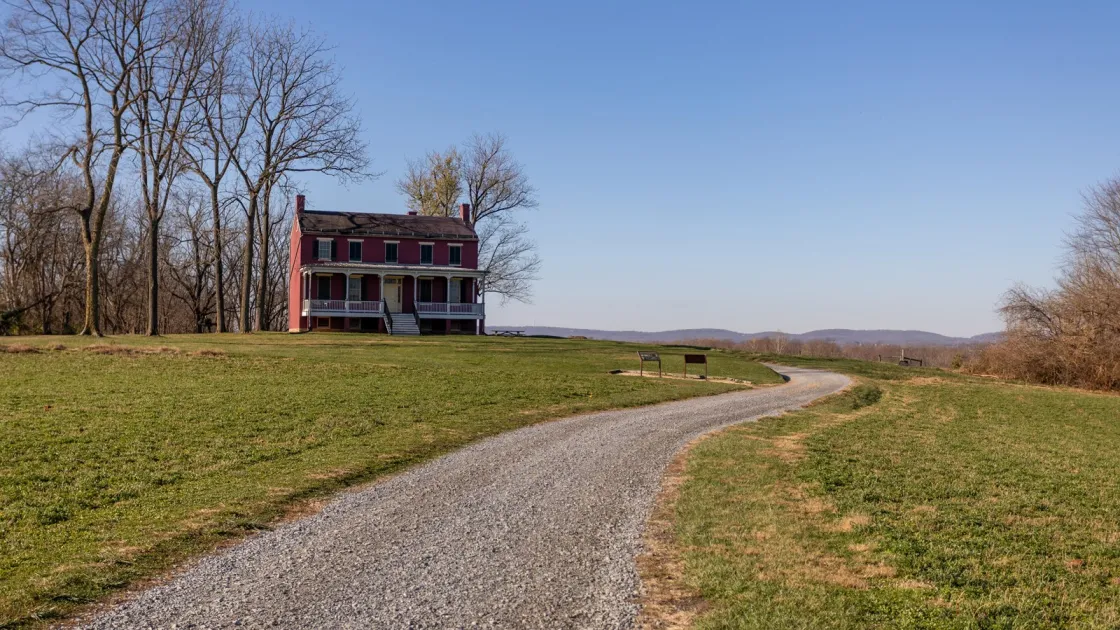
When Early’s Confederate army approached in 1864, the Worthingtons, some family friends and their slaves took shelter in the basement. Six-year-old Glen Worthington, one of John’s three sons, watched through a gap in the basement boards as three Confederate attacks assembled and set out from the home’s front yard. A battery of Confederate artillery deployed in the yard, and return fire from Union guns damaged the house. During and after the battle, the house was used as a field hospital by wounded on both sides.
John continued to farm his land after the war, without slaves, until his death in 1905. Glen Worthington went on to become a local magistrate judge and was an early advocate for the preservation of the Monocacy Battlefield. His eyewitness account of the battle forms the basis for much of the scholarship on the battle.
From the front porch of the Worthington House, a red-brick barn and the nearby house of the Thomas family’s farm is visible. Christian Keefer Thomas, a recently retired dry goods merchant from Baltimore, purchased the property in 1860. Thomas sought the farm, named “Araby”, as a refuge from the civil unrest and rioting in pre-Civil War Baltimore. Unfortunately, his farm—spitting distance from Monocacy Junction and the road to Washington—saw constant military activity throughout the war.
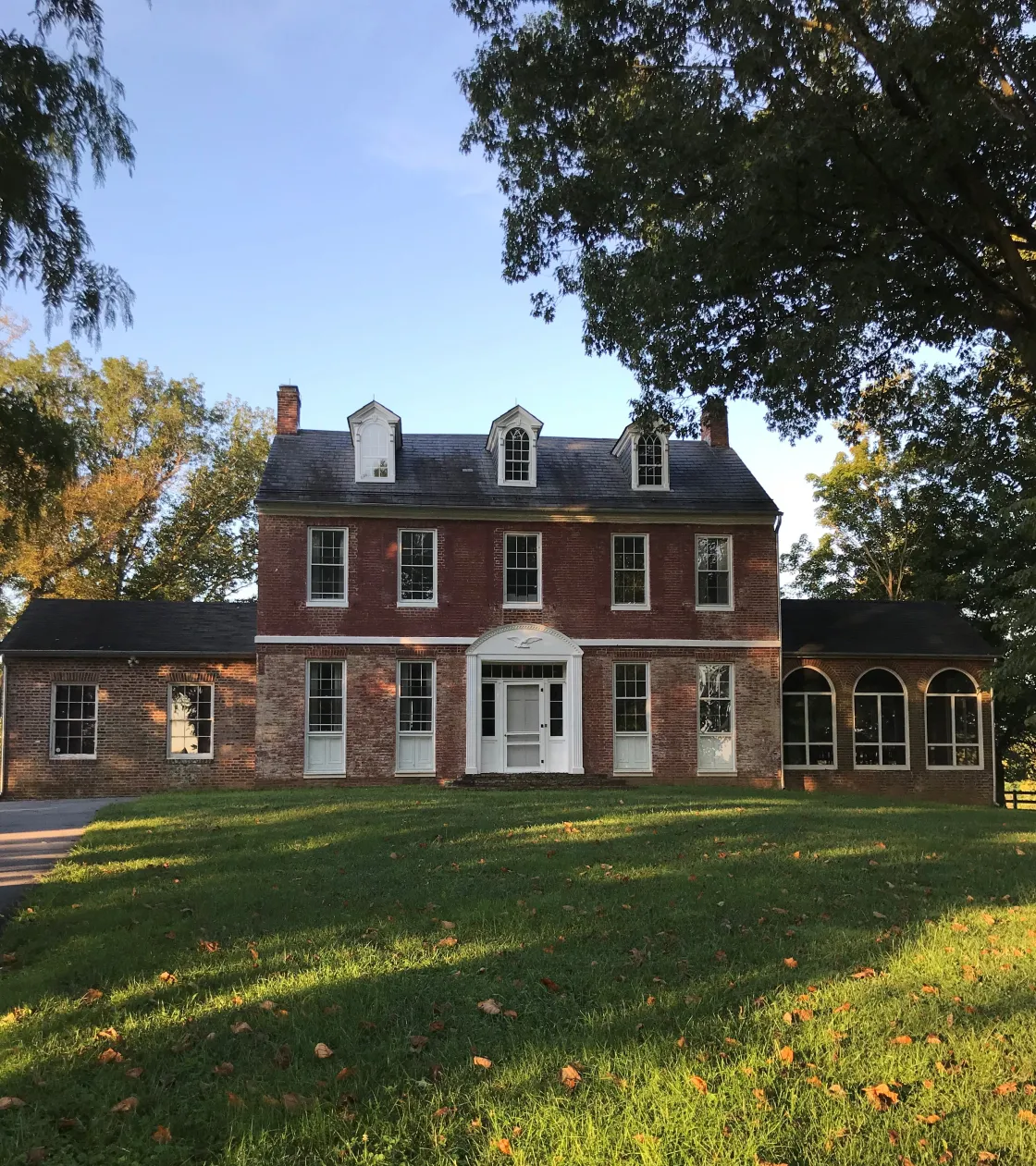
The Thomas’ first encounter with the war came in the Maryland Campaign as both Union and Confederate troops passed through the property. When the Confederates damaged the B&O Railroad bridge over the river, Union leaders decided to place a permanent garrison nearby to defend it. The Thomas’ became quite familiar with the men of the 14th New Jersey and its colonel’s pet dog; the regiment manned the garrison until Grant called them to the front in 1864.
Barely two months later, the 14th New Jersey returned, this time as part of General Lew Wallace’s hastily assembled blocking force, and fouoght in and around the buildings of the Thomas Farm. Combat whirled around the farm and its outbuildings all afternoon on July 9, 1864, as Union and Confederate troops fought for control of the high ground it sat on. Men from the 14th New Jersey periodically opened the cellar door to check on the Thomas family’s safety as they took refuge inside.
After the battle, the house and buildings were used as a field hospital. Weeks later while Union General Philip Sheridan prepared for the autumn campaign in the Shenandoah Valley, he used the Thomas House as his headquarters between the Valley and Washington D.C. When General Grant came to visit Sheridan and discuss the upcoming 1864 Valley Campaign, he also stayed at the Thomas House. The house witnessed many of the key planning discussions for that pivotal campaign.
The Thomas family continued to live in and farm the property until 1910. In 2002, after a fundraising campaign led by the American Battlefield Trust (then called the Civil War Trust), the National Park Service acquired the crucial land of the Thomas Farm to save and preserve forever. The Thomas House now serves as the headquarters of Monocacy National Battlefield Park.
Across the Washington Pike, now MD-355, from "Araby," sits the Gambrill Mill. James H. Gambrill and his family operated the mill and lived in a nearby home which no longer stands. The Gambrills purchased the mill in 1855 and their business prospered. During the Battle of Monocacy, the Gambrills took shelter in the Thomas House while the mill was used as a field hospital.
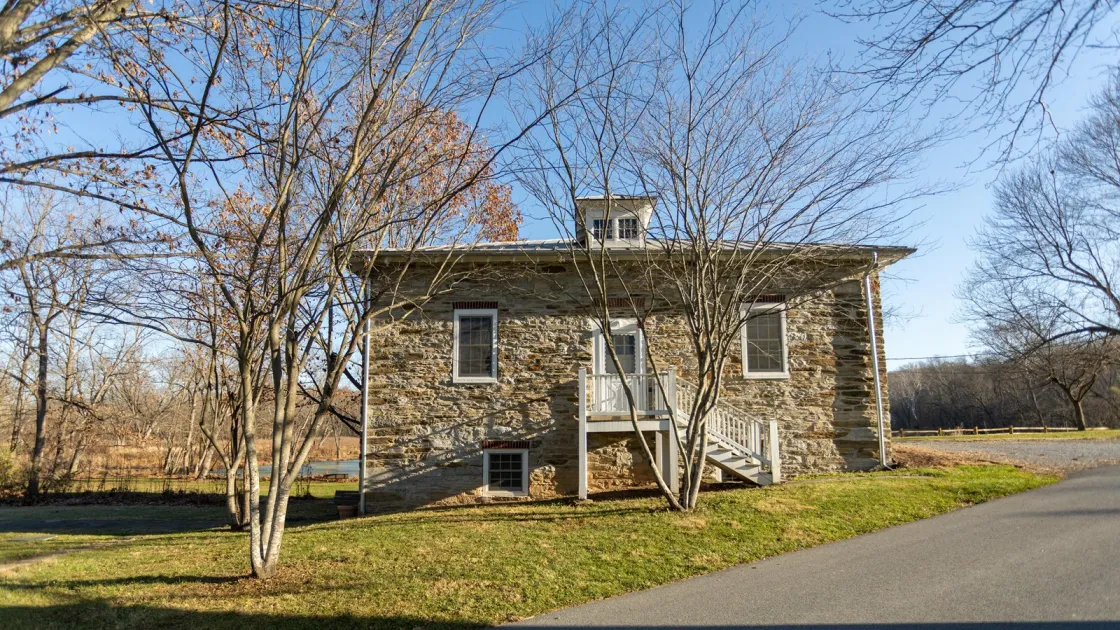
After the battle, the Gambrills purchased land adjacent to the mill in order to build a larger home. Completed in 1873, "Edgewood" became the primary residence of the Gambrills for nearly thirty years. The decadence of the home, with its many rooms, fancy exterior and interior furnishings, and large, breezy summer porch, testifies to the success of the mill. The Gambrills sold the property in 1901, ownership passing through three other families until the National Park Service purchased the property in 1981. The house was restored in 1996 by the NPS Historic Preservation Training Center and has remained their headquarters since.
The historic homes that adorn the Monocacy National Battlefield Park each play an important role in telling the stories of the battle and the people who lived and worked the land on which it took place. These last surviving witnesses of the battle are a critical aid in helping visitors visualize the landscape of 1864. Like Glen Worthington peeking out of his window at the battle raging around him, these buildings are our own windows through which we can see into the past and relive a critical moment of the Civil War.
